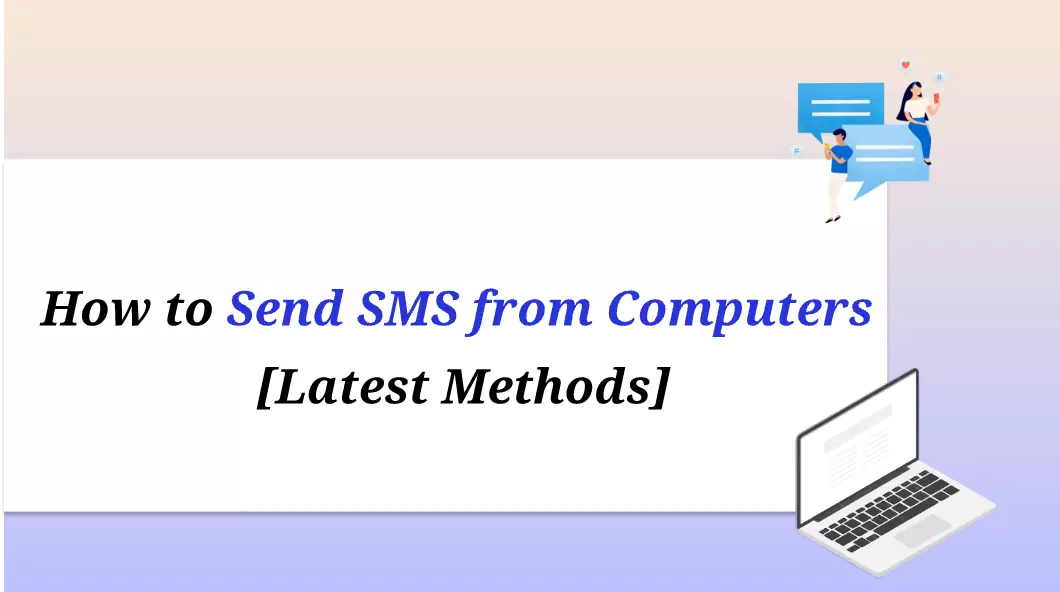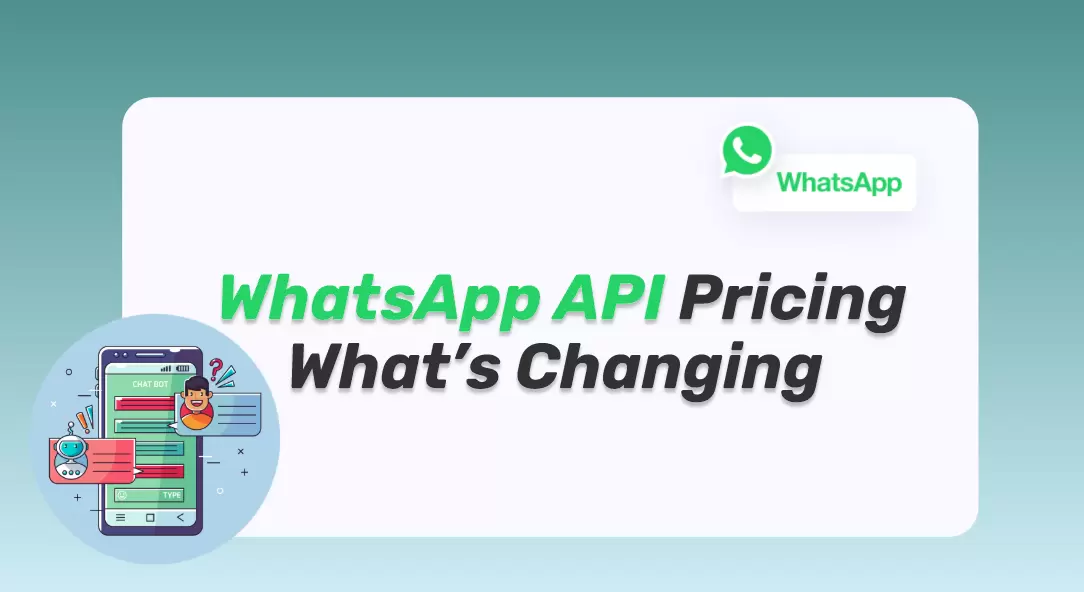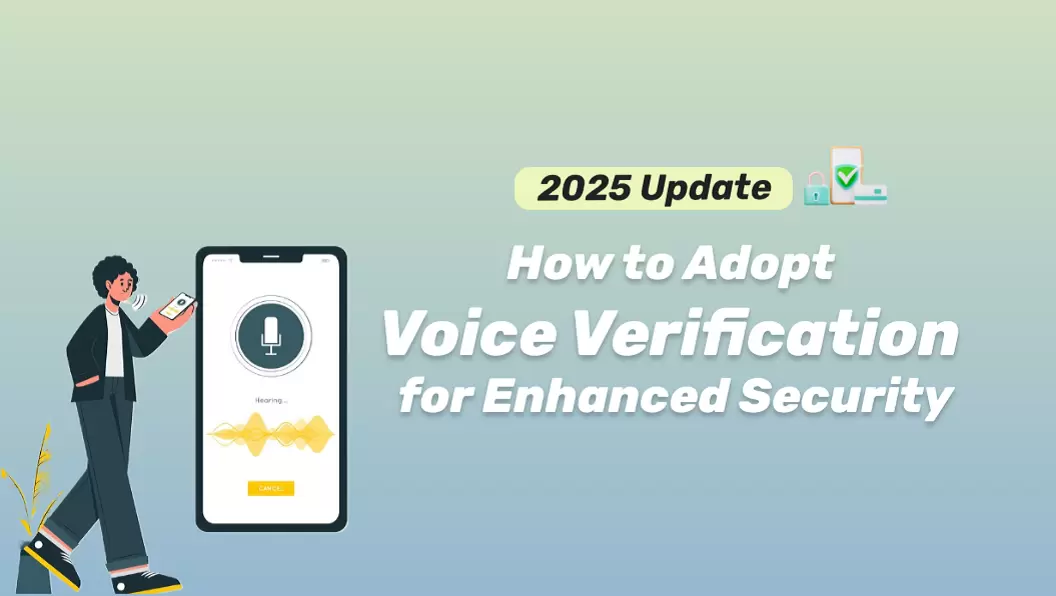In a world where every second counts, SMS notification keep your audience informed and engaged with unmatched speed. They are ideal for sharing promotions, confirming orders, or sending critical alerts. This guide explains how SMS notifications work, why they matter, and how to craft them effectively while introducing practical tools to help you put your plans into action.
What is SMS Notification?
An SMS notification is a short, targeted text message sent from an application directly to mobile devices via the Short Message Service (SMS), as the same way as any other text messages. It can appear on the Lock Screen, Notification Center, and text message application of customers' devices. An SMS notification is usually limited to 160 characters. No matter the type of business, you can use SMS notifications to inform and alert customers.

How do SMS notifications work?
Here's the journey an SMS notification takes from a sender to a recipient:

1. Triggering event: An event, such as a user signing up for a service or placing an order, or a system alert or reminder, triggers the need to send an SMS notification.
2. Processing the event: The application (Sender) processes the event and decides an SMS should be sent. It composes the message, identifies the recipient's phone number, and gathers any other necessary details.
3. Sending the request: The application sends a request to the SMS gateway API to send the SMS. The request includes:
- Recipient's phone number: The phone number to send the SMS to.
- Notification content: The SMS text.
- API credentials: Authentication information like API key and secret.
- Sender ID (optional): The sender's phone number or name.
 Note
Note
The SMS gateway API is integrated with the application, acting as the bridge between the application and the mobile carrier networks.
4. Processing the request: The SMS gateway receives, authenticates, and processes the API request.
5. Sending the message: The gateway sends the message to the recipient's mobile carrier network, which then delivers it to the recipient's phone.
6. Confirming the delivery: Once delivered, the carrier network sends a delivery receipt back to the SMS gateway. The gateway updates the message status, which the application can check if needed.
 Note
Note
If delivery fails due to issues like an invalid phone number, the SMS gateway will provide error codes and messages. The application can then handle these errors, retry sending, or use alternative notification methods.
SMS Notifications vs Push Notifications
You probably get a mix of messages on your phone every day. Some are texts confirming a delivery or reminding you about an appointment. Others are push notifications from apps, nudging you about a new post or an update. Both grab your attention, but in different ways. Understanding when to use an SMS instead of a push notification can make sure your message actually gets seen and acted on.
A Quick Comparison
| Feature | SMS Notification | Push Notification |
|---|---|---|
| Delivery Method | Sent to a user's phone number via mobile network | Sent via mobile app or web browser |
| Internet Required | No | Yes |
| Visibility | Appears in the phone's message inbox | Appears on screen when the app or browser is active |
| Open Rate | Generally higher, as texts are read quickly | Varies, often lower than SMS |
| Best for | Urgent alerts, time-sensitive updates, personal messages | App engagement, quick in-app reminders |
| Reach | Works on any mobile phone | Requires users to have the app or browser open |
| Character Limit | Typically 160 characters per message | Can include longer text, images, and rich media |
In short, SMS notifications works on any phone and is ideal for urgent or time-sensitive messages. Push notifications require internet and are best for engaging active app users. Choosing the right channel ensures your audience sees your message at the right time.
You might be interested in: SMS vs. Push Notification: Core Differences and Connections
How SMS Notifications Drive Business Growth
Having learned what you can send via SMS notifications, let's uncover their benefits to see how SMS notifications help your business grow.

✔️ Wider customer reach
SMS notifications can reach anyone with a mobile phone. According to What's the Big Data, the numbers of smartphone users is predicted to reach 7.1 billion. And people tend to keep their mobile phone with them at all times. This enables your message to reach a wider range of people. What's more, SMS notifications can be received in areas without a good internet connection because they don't rely on internet access.
✔️ High open and response rates
Compared to other digital channels, SMS notifications see much higher open and response rates. Studies show that 98% of SMS messages are opened, with 90% opened within 3 minutes. Besides, around 11% will respond to an SMS. The immediate, push-based nature of SMS, paired with its widespread use on smartphones, makes notifications hard to overlook. This allows your business to reach customers directly and effectively.
✔️ Direct, personal, and immediate connection with customers
SMS notifications are sent directly to customers' mobile device and appear immediately, often with notification sound or vibrations. This ensures your important messages are seen instantly. Besides, SMS notifications allow easy personalization with the recipient's name, specific details about their interactions with your business, and other tailored touches. This personal touch can make customers feel valued and build stronger relationships between customers and your brand.
✔️ Low cost and high ROI
Sending SMS notifications is extremely cost-effective, costing just a few cents per message, while still providing high engagement rates. Given its low cost and ability to precisely target customers, the return on investment (ROI) from SMS campaigns can be quite substantial. There's no wasted ad spend reaching the wrong audiences.
SMS Notification Examples & Use Cases
SMS notifications are versatile and can serve both marketing and non-marketing purposes. They help businesses connect with customers, share updates, and build trust. Here are practical examples showing how different types of messages can be used effectively.
Marketing Purposes
1 Promotions and Discounts
-
Retail store sends a text about a “Buy One, Get One Free” weekend offer.
Example: “This weekend only! Buy 1 shirt, get 1 free. Visit us today.” -
Online fashion brand shares a limited-time 20% discount code.
Example: “Get 20% off your order! Use code SAVE20 at checkout. Ends midnight.”
2 Product Launch Announcements
-
Electronics company informs customers of a new smartphone release.
Example: “The new XPhone 12 is here. Order now for free next-day delivery.” -
Cosmetics brand announces the arrival of a seasonal collection.
Example: “Fall Glow Collection is now available! Shop our new shades today.”
3 Event Invitations
-
Music venue sends a reminder and ticket link for an upcoming concert.
Example: “Don't miss The Indie Nights live on Oct 15. Get tickets here: link” -
Gym invites members to a free wellness workshop.
Example: “Join our free yoga workshop this Saturday at 10 AM. RSVP now!”
Non-Marketing Purposes
1 Order and Delivery Updates
-
E-commerce site sends tracking details when an order ships.
Example: “Your order #84291 has shipped. Track here: link” -
Food delivery service alerts customers when the driver is nearby.
Example: “Your food is arriving in 5 minutes. Please be ready to receive it.”
2 Reminders
-
Dental clinic reminds patients about their appointments.
Example: “Reminder: Your dental appointment is tomorrow at 3 PM.” -
Subscription service warns users about upcoming billing dates.
Example: “Your subscription renews on Aug 20. Update payment details if needed.”
3 Security Alerts
-
Bank sends an SMS when unusual account activity is detected.
Example: “Alert: Unusual activity detected on your account. Call us at 123-456-7890.” -
Email provider shares a one-time verification code for login.
Example: “Your verification code is 947201. Expires in 10 minutes.”
Tips for Crafting Effective SMS notifications
After learning how to send SMS notifications, it's time to examine how you can make the most of this powerful tool. Sending SMS notifications effectively can greatly enhance your results. Let's take a look at some best practices to ensure you're getting the optimal impact from your efforts:
💡 Get consent from your customers
Be sure your customers have opted in to receive your SMS. This is essential for compliance and maintaining customer trust.
💡 Personalize your messages
Personalized messages see much higher open and response rates. Segment your audience and include relevant details like the recipient's name and past interactions.
💡 Keep your messages short and get to the point
An SMS notification is usually limited to 160 characters, so make sure your messages are concise and directly to the point. This helps ensure your important details are seen as effectively as possible.
💡 Add call to actions
To make each cent count, you can motivate the recipient to take action with each message, such as confirming an order or visiting your website. Add a clear call to action (CTA) and make it as easy as possible for your customer to respond.
💡 Provide value
Always add value to your messages, such as important updates, useful information, or exclusive offers. Avoid solely promotional alerts.
How to Send SMS Notifications?
Here comes the most exciting part—how to send SMS notifications. Simply follow these key steps:
Step 1. Choose an SMS notification service
First, you'll need to select a reliable SMS notification service provider. Evaluate different providers based on key factors like ease of use, messaging channels, pricing, and reliability. If you're swamped and need a shortcut to a trustworthy SMS notification service tool, our top pick is EngageLab SMS. You can move on to the next section to explore its standout features and see why it's worth your try.
Step 2. Create an account
Register for an account with your selected SMS service provider.
Once your account is set up, you can choose to send SMS notifications directly through the service tool, or follow the next few steps to send notifications from your application using API configurations.
Step 3. (optional) Obtain API credentials
Once your account is set up, obtain your API credentials, like API key. These credentials will used to authenticate your application with the SMS service.
Step 4. (optional) Configure your application
Integrate the SMS API into your application. You'll be able to write code to send SMS notifications.
Step 5. Test SMS notifications
Send SMS notifications to test phone numbers and verify that the messages are delivered properly. Check the message delivery rates and other metrics through the statistics feature provided by your chosen SMS service.
Why is EngageLab SMS Notification Service worth trying out?

EngageLab is an all-in-one highly integrated platform that supports multiple marketing channels, including AppPush, WebPush, SMS, OTP, WhatsApp, and Email. It makes sure you reach customers effectively.

EngageLab SMS has the following remarkable advantages:
-
1
Global reach and security
Deliver messages to customers worldwide in just 5 seconds , with a 99% delivery rate. Direct carrier connections in 200+ countries ensure speed and reliability, while strict compliance with GDPR, CCPA, and other global privacy standards protects your data.
Note
GDPR stands for General Data Protection Regulation, a European Union regulation on information privacy in the European Union and the European Economic Area.
CCPA stands for California Consumer Privacy Act, a state statute intended to enhance privacy rights and consumer protection for residents of the state of California in the United States.
-
2
Smart channel switching for reliability
Multiple carrier routes and intelligent monitoring keep your messages moving. If one route slows, the system automatically switches to the next best channel to avoid delays. -
3
High-concurrency processing
EngageLab SMS provides notifications based on a technical architecture capable of handling billions of messages. This ensures customers can receive your SMS notifications during peak hours. -
4
Performance tracking
Access real-time stats on delivery, status, and costs. Transparent reporting lets you measure ROI and spot issues before they impact results. -
5
Two-way customer engagement
Let customers reply directly to your messages. Responses can trigger automated actions or live follow-ups, making SMS a true conversation channel for support, feedback, and promotions. -
6
Notification templates
Save time with pre-designed SMS templates you can customize instantly. This allows users to send consistent, personalized messages without rewriting every time.

Now it's time to unlock the unparalleled customer engagement strategies of EngageLab SMS yourself. Take the first step today with the FREE version. You'll see how it can transform the interaction between your brand and customers.
Final Thoughts
In summary, using SMS notifications can help get your efforts to reach customers off the ground. With EngageLab SMS, you'll have all the tools to send SMS notifications easily and see quick results. We'd love to hear about your journey with it. Here's to your business's continued growth and success! 🍻
Start For Free






